“I’m always saying, pay attention to the quietest people. It doesn’t mean they don’t have something to say; it just means they’re not comfortable saying it yet,” observed Andrea Baker, the executive director of En2Action, a San Francisco nonprofit that works to promote equity and transformative social good. Elevating community perspectives to enable change is critical to her organization’s work. “Our job is to build comfort,” said Andrea. “That’s when they start finding their voice.”

En2Action is a vital community partner of the Food Bank and has extensive experience conducting robust community engagement that centers racial equity and gathers input from diverse communities to inform community and economic development planning. En2Action is collaborating with the Food Bank on several initiatives that address root causes of hunger in San Francisco and Marin, including the Root Cause Action Learning & Leading to achieve Food SecuritY in Marin Project, also known as RALLY Marin.
Led and facilitated by En2Action, the RALLY Marin Project is a one-year planning grant and engagement effort supported by Feeding America that centers the wisdom of people experiencing food insecurity, engages a task force of community-based organizations and multi-service providers with a goal toward removing systemic barriers to CalFresh benefits in Marin County, which disproportionately impacts people of color.
“Our work with RALLY Marin is, again, about elevating community voices. We are reaching out to food providers, pantries, and other organizations that go beyond just providing food. In particular, with this program, we’re looking at CalFresh and why more folks of color are not utilizing it, particularly in Latinx communities.”
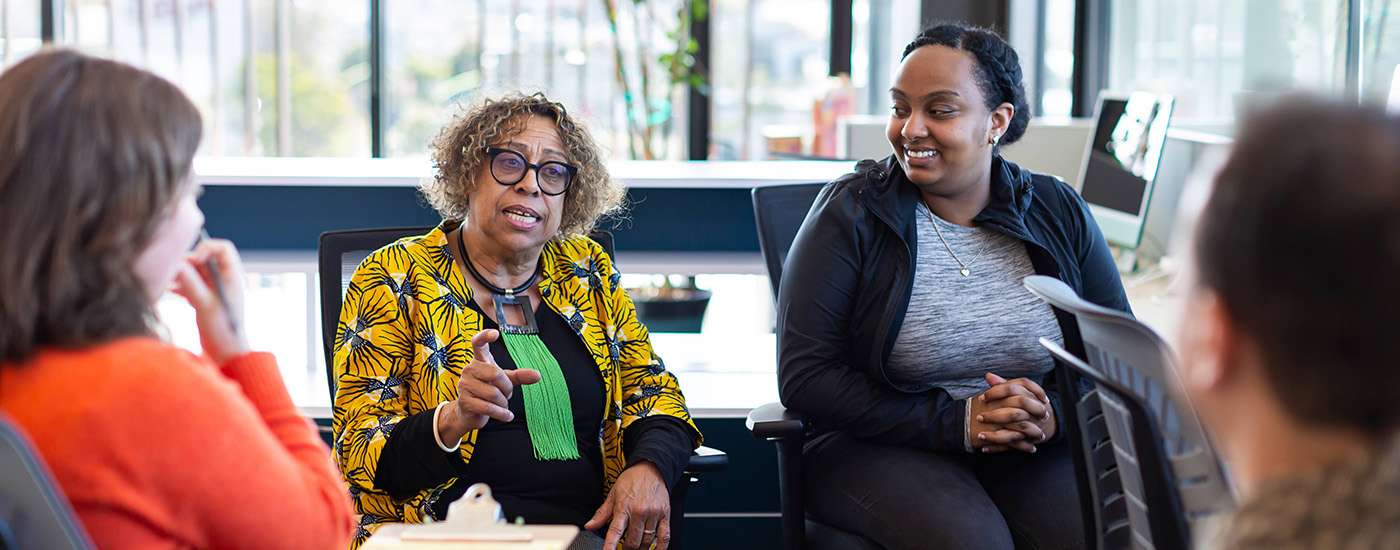
Rooted in Community
When we spoke to Andrea, the nonprofit had just moved into the new Southeast Community Center in Bayview-Hunters Point. A Black, indigenous, and people of color (BIPOC)-led organization, En2Action’s work includes a history of initiatives that intersect food, racial justice, and economic equity. Looking out of the office space windows, she observed that many of the challenges facing the neighborhood and other communities of color in the City are rooted in historic racist policies such as redlining and urban renewal that displaced thousands of Black Americans — erasing generational wealth in the process.
“How do most families build wealth in this area? You build it through real estate; you buy a home. It supports your kid going to college. You can help somebody open a business. That was taken from us,” she says. She notes that those antecedent inequities, compounded by the region’s high cost of living, contributed to San Francisco’s shrinking Black population — from around 13% in the 1980s to under 5% today. “I have seen this neighborhood go from 75% African American to where we are today; just about 30% of the Bayview population is Black.”
Andrea wants to help the remaining enclaves of color in the City thrive and believes food is a catalyst for community development.
“Food has been a way out for many people of color and immigrant communities. It’s been a way out for a business, a catering business, a food truck, a restaurant,” says Andrea. Four years ago, En2Action launched the Bayview Bistro food hub, transforming a vacant lot into a festive gathering space featuring a variety of savory cuisines from Bayview-based vendors. But when the pandemic halted in-person gatherings, life moved online almost overnight, forcing the nonprofit to pivot. The shift was challenging, as they had to acquire a commercial kitchen and develop Bayview Bistro boxes for online food ordering. Its reach was expanded further through pandemic resources to fight hunger. “And that kept our vendors going. Some vendors who’ve worked with us said, ‘I kept my lights on.’ And that was an amazing thing.”

The learnings from Bayview Bistro and other neighborhood-focused economic development programs, including Sell Black — a digital marketing program to increase the online presence of Black businesses — contributed to the development of its Ujamaa Kitchen. Modeled on the fourth principle of Kwanzaa — cooperative economics — the initiative is an incubator for food entrepreneurs that features a six-month culinary boot camp, certification to operate a commercial kitchen, and a myriad of business mentorship services. Ujamaa Kitchen alum Chef Dontaye Ball, whose pop-up restaurant Gumbo Social specializes in gumbo and soul food, has high praise for Andrea.
“You just look at her impact on our business. Once we got access to that kitchen, that opened the door to be able to push Gumbo Social forward,” Ball said. “Over $35,000 in sales came directly from referrals or opportunities that came directly from En2Action,” he added. “For some people, that’s not a lot, but for us, it’s a game changer. That’s two months of payroll; that gives us an opportunity to build for the future.” That future included a brick-and-mortar Gumbo Social restaurant that opened in early June in the Bayview. And that is an outcome that En2Action enthusiastically applauds. “It’s really important to me, to us, that we are not simply giving fish. We are teaching folks how to fish,” said Andrea. “Food is an empowering thing.”
Getting Perspectives on Marin

For several months En2Action’s community empowerment lens has been focused on a region rife with systemic inequities 50 miles north of the Bayview. RaceCounts.org ranks Marin County as the second most racially disparate county in California, finding the Latinx community the most impacted across all disparity indicators. Twenty-five percent of Latinx children in the county live below the federal poverty level. The RALLY Marin initiative, led by En2Action, features a unique partnership with a task force of community-based organizations seeking to identify and elevate food insecurity solutions that prioritize the lived experiences and perspectives of people most impacted by the issue. Key to finding those solutions is the targeted community outreach conducted through RALLY Marin, which includes listening with intentionality to the concerns of Latinx residents who may qualify for food assistance. The results have been more than revealing.
“The level of information from community members we were able to hear was authentic, and heart-centered,” said the Food Bank’s Senior Program Manager Alex Danino, reflecting on the focus groups led by En2Action in late April. “There were super-rich discussions that spoke to the challenges and the opportunities for growth,” she added. As part of the team developing recommendations and plans for implementing learnings from RALLY Marin, Alex was impressed by the participant feedback in the listening sessions. “I believe the feedback will tell us how and what we can do next on our outreach efforts,” she observed. “A new way of doing our work is emerging, including how we are working with community partners, the county and co-creating options for access, all based on community voices.”
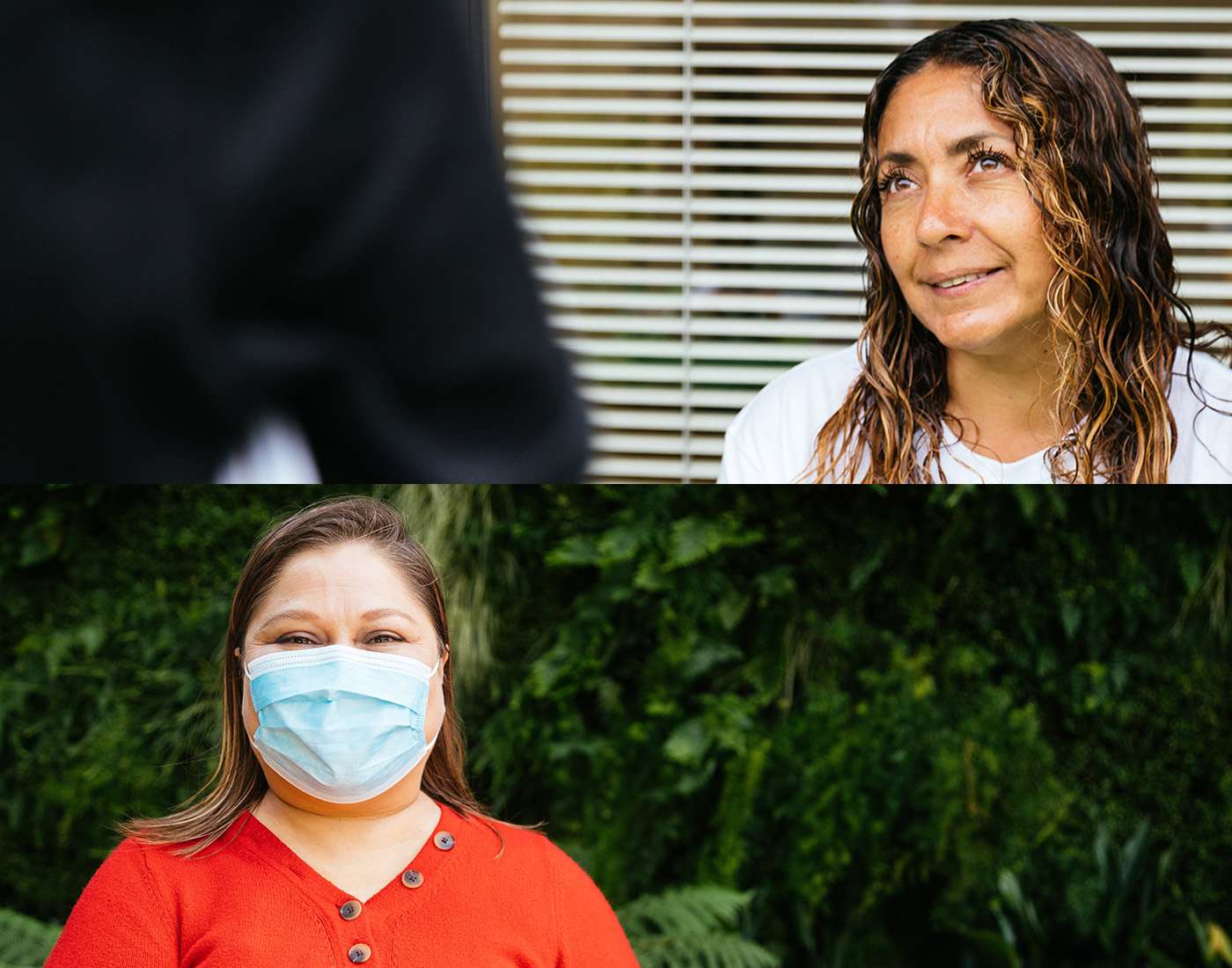
Liliana Sandoval, Associate Director of Programs, Outreach for CalFresh, looks forward to the outcomes revealed from the focus groups. “En2Action is going to gather all that feedback, analyze it and propose solutions that we could then take for more access and utilization of CalFresh,” Liliana said. And she adds that important questions will arise from these community engagement efforts. “How could we bring Marin County administrators into the fold and get them involved in co-creating solutions? What can the county do with this information that we’ve gotten directly from people who have not accessed the program because of barriers? Just what work needs to be done at all levels?” En2Action will continue its outreach, partnership, and analysis efforts through RALLY Marin, delivering a Community Plan in the early summer.
As for Andrea Baker, she firmly believes providing community members opportunities to be heard and ask authentic questions about their needs are catalysts for real change, whether in Marin or San Francisco’s Bayview. “If we can engage, empower, and then provide the resources for people to act, then I think we can get a whole lot of stuff done,” she said. Pointing to an En2Action team gathered in a meeting room, “You know, the 12 of us here can’t do it all, but if the 12 of us here, every year, can impact one person and those people can go out and impact one more person, I’m all for that. I can live with those numbers.”
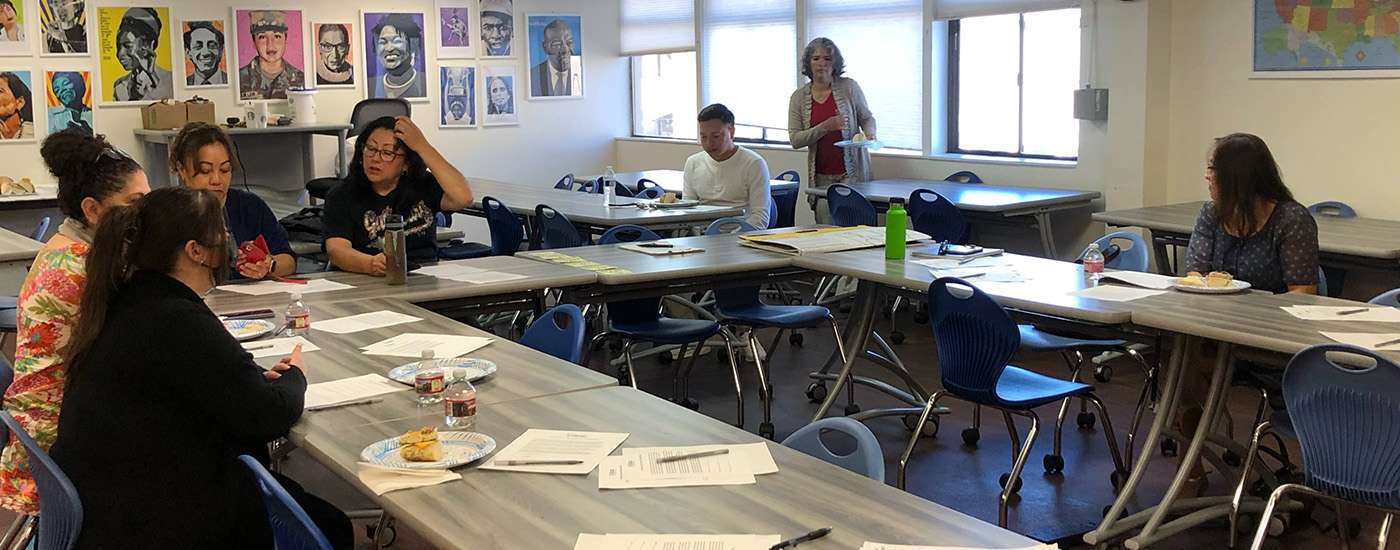




 40 years, an activist, and a pantry participant since 2020 in his neighborhood of the Western Addition. He’s also one of roughly 101,000 CalFresh (known as SNAP federally) recipients in San Francisco who saw their grocery budget decimated overnight. This is due to the federal government’s decision to cut emergency allotments, which boosted CalFresh benefits by an average of $160 for recipients in San Francisco during the pandemic. That’s a loss of nearly $12 million a month in food assistance for our neighbors.
40 years, an activist, and a pantry participant since 2020 in his neighborhood of the Western Addition. He’s also one of roughly 101,000 CalFresh (known as SNAP federally) recipients in San Francisco who saw their grocery budget decimated overnight. This is due to the federal government’s decision to cut emergency allotments, which boosted CalFresh benefits by an average of $160 for recipients in San Francisco during the pandemic. That’s a loss of nearly $12 million a month in food assistance for our neighbors. For Miguel, his CalFresh benefits were a supplemental support that helped him stretch his budget and extend a little kindness to other friends who were struggling during the throes of the pandemic. “I was able not only to get things for myself, but I was able to invite friends to get food with me so we can have dinner together. I did it with two friends, maybe every two weeks. Eating alone is not really the best thing. Having company and being able to provide something a little extra, that was very nice. It really made a difference for me and my friends.”
For Miguel, his CalFresh benefits were a supplemental support that helped him stretch his budget and extend a little kindness to other friends who were struggling during the throes of the pandemic. “I was able not only to get things for myself, but I was able to invite friends to get food with me so we can have dinner together. I did it with two friends, maybe every two weeks. Eating alone is not really the best thing. Having company and being able to provide something a little extra, that was very nice. It really made a difference for me and my friends.” leave food banks to pick up the slack, it’s essential that the Food Bank maintains access to the fresh produce, proteins, and grains that 53,000 neighbors rely on weekly to nourish themselves. “The benefit is greater than just food,” Miguel explained to us. “At my age, I don’t think there’s any stigma – I encourage other people to apply for these services. I have diabetes, so I have to be careful about what I’m eating. And besides the food, I can use the money [I save] on other things that are beneficial for my health or enjoyment. It’s a ripple effect; it magnifies your life in all these positive ways.”
leave food banks to pick up the slack, it’s essential that the Food Bank maintains access to the fresh produce, proteins, and grains that 53,000 neighbors rely on weekly to nourish themselves. “The benefit is greater than just food,” Miguel explained to us. “At my age, I don’t think there’s any stigma – I encourage other people to apply for these services. I have diabetes, so I have to be careful about what I’m eating. And besides the food, I can use the money [I save] on other things that are beneficial for my health or enjoyment. It’s a ripple effect; it magnifies your life in all these positive ways.”
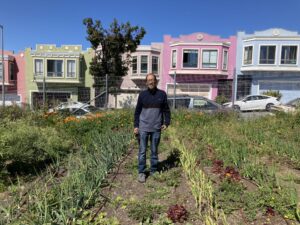 her history of civic contribution.
her history of civic contribution.  app] to stay in touch after leaving the farm.
app] to stay in touch after leaving the farm. 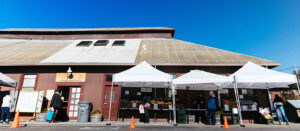 The town of Pt. Reyes Station itself is, by all accounts, pretty tiny. But the reach of local community hub and Food Bank partner
The town of Pt. Reyes Station itself is, by all accounts, pretty tiny. But the reach of local community hub and Food Bank partner 
 During the intense flooding back in December, “People were saying, ‘We have no power, we lost everything in the fridge,’” Alma shared. “Those days we were very busy, and we operated with no power. We had a generator, and we plugged in everything and continued [all our services]. People were so happy that we had food.”
During the intense flooding back in December, “People were saying, ‘We have no power, we lost everything in the fridge,’” Alma shared. “Those days we were very busy, and we operated with no power. We had a generator, and we plugged in everything and continued [all our services]. People were so happy that we had food.”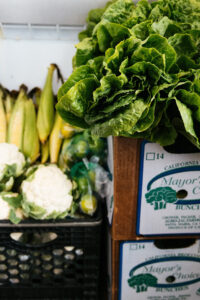 income families in West Marin with unexpected expenses,” shared Yareli Cervantes, Emergency Assistance Program Manager at WMCS. “Just by serving food, we’re able to really get to know people and identify their needs. It opens up the conversation for them to come seek out financial assistance.”
income families in West Marin with unexpected expenses,” shared Yareli Cervantes, Emergency Assistance Program Manager at WMCS. “Just by serving food, we’re able to really get to know people and identify their needs. It opens up the conversation for them to come seek out financial assistance.”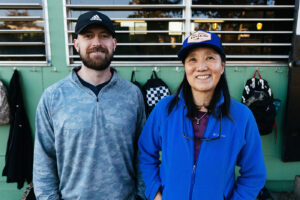 an after-school program for mainly 6
an after-school program for mainly 6 provide tailored services for the needs of their communities
provide tailored services for the needs of their communities 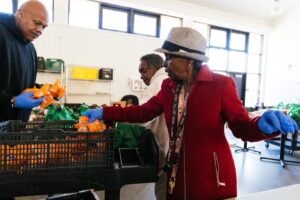
 Ms. Adrian: My daughter is the president of the
Ms. Adrian: My daughter is the president of the 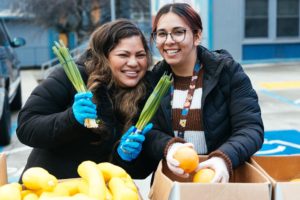 garden sits at the top of the stairs.
garden sits at the top of the stairs.  community – but that’s not all.
community – but that’s not all. Kiani, a life coach at the Phoenix Project and a regular pantry volunteer, says that “a lot of the work I’ve been doing here with the youth is healing. How do we address the traumas that we’ve been through and how they’ve impacted us? How do we transform that into something more productive or conducive to your success?”
Kiani, a life coach at the Phoenix Project and a regular pantry volunteer, says that “a lot of the work I’ve been doing here with the youth is healing. How do we address the traumas that we’ve been through and how they’ve impacted us? How do we transform that into something more productive or conducive to your success?” “Hey Trav!” or “My friend!”
“Hey Trav!” or “My friend!” 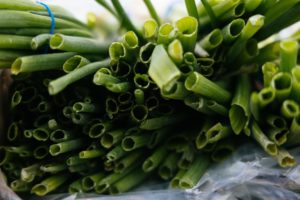 activist and advocate is something he never saw coming. With the trust of the community on one hand, and new connections to resources on the other, he’s the “perfect bridge.”
activist and advocate is something he never saw coming. With the trust of the community on one hand, and new connections to resources on the other, he’s the “perfect bridge.” 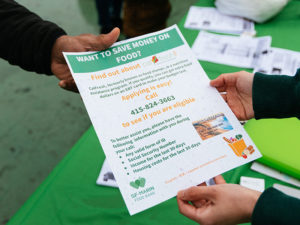 “I pick up groceries from the food pantry in the Canal (San Rafael) on Tuesdays, and the rest I buy with my food stamps. Last month, I received $211. Now, the letter from the county says I’ll receive $23, at most $29,” Gladys told us over the phone in Spanish. As a senior, grocery shopping is already made difficult by mobility issues: “My son will often go shopping for the both of us. I’m scared I’m going to fall.” Now, it will be doubly difficult without the emergency allotments she depended on previously.
“I pick up groceries from the food pantry in the Canal (San Rafael) on Tuesdays, and the rest I buy with my food stamps. Last month, I received $211. Now, the letter from the county says I’ll receive $23, at most $29,” Gladys told us over the phone in Spanish. As a senior, grocery shopping is already made difficult by mobility issues: “My son will often go shopping for the both of us. I’m scared I’m going to fall.” Now, it will be doubly difficult without the emergency allotments she depended on previously. 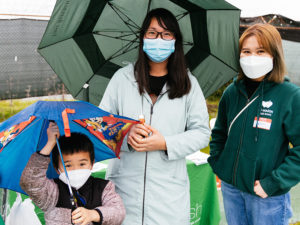 and Advocacy team continues to push at the federal level for benefits that better reflect the cost of living in our counties, and our CalFresh team continues assisting households in applying and securing the benefits they qualify for, we need our community members and local elected officials to rally in support of our neighbors facing food insecurity.
and Advocacy team continues to push at the federal level for benefits that better reflect the cost of living in our counties, and our CalFresh team continues assisting households in applying and securing the benefits they qualify for, we need our community members and local elected officials to rally in support of our neighbors facing food insecurity.  With her rescue dog Charlie slung over her hip in a crossbody bag (she says, “my passion is, I love dogs”), Cilla Lee was hard to miss at the Stonestown Pop-up Pantry where we met. And as she talked, three things became apparent: Cilla is a woman with a lot of ideas, a lot of drive, and a lot of herself to give. A San Franciscan since the age of five, she says that the pandemic “made [her] step up” when it came to supporting her community.
With her rescue dog Charlie slung over her hip in a crossbody bag (she says, “my passion is, I love dogs”), Cilla Lee was hard to miss at the Stonestown Pop-up Pantry where we met. And as she talked, three things became apparent: Cilla is a woman with a lot of ideas, a lot of drive, and a lot of herself to give. A San Franciscan since the age of five, she says that the pandemic “made [her] step up” when it came to supporting her community.  upon the concept of “Buy-Nothing Groups,” virtual and occasionally in-person communities where immediate neighbors exchange all types of goods, services and information– all for free, all from their own abundance, all as part of a “gift economy.”
upon the concept of “Buy-Nothing Groups,” virtual and occasionally in-person communities where immediate neighbors exchange all types of goods, services and information– all for free, all from their own abundance, all as part of a “gift economy.” 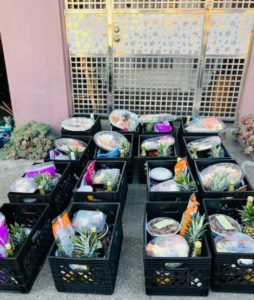 Cilla became the admin of the Outer Richmond Buy Nothing group on Facebook. While food isn’t often the primary focus of Buy Nothing groups, in the early pandemic, food donations started rolling in. At first, she started out by making baked goods and offering them up to add a little sweetness to her neighbor’s days.
Cilla became the admin of the Outer Richmond Buy Nothing group on Facebook. While food isn’t often the primary focus of Buy Nothing groups, in the early pandemic, food donations started rolling in. At first, she started out by making baked goods and offering them up to add a little sweetness to her neighbor’s days. 


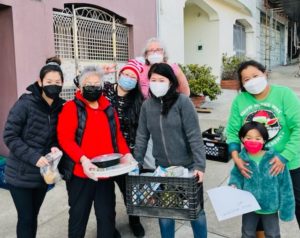 At the Food Bank, we’re grateful to learn from and be in partnership with people like Cilla, who use their knowledge of their neighbors to find hyper-localized, community-specific solutions and novel ways to fight hunger. Ultimately, like Cilla says, at the heart of it all is the gift of connecting with our neighbors– and food is a pathway to do just that.
At the Food Bank, we’re grateful to learn from and be in partnership with people like Cilla, who use their knowledge of their neighbors to find hyper-localized, community-specific solutions and novel ways to fight hunger. Ultimately, like Cilla says, at the heart of it all is the gift of connecting with our neighbors– and food is a pathway to do just that.
Share